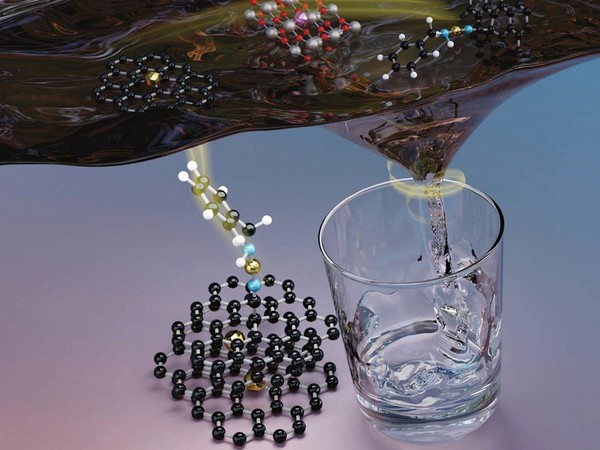In pursuit of water treatment methodologies, researchers from Palacký University’s CATRIN, the Centre for Energy and Environmental Technologies of VSB-TUO, and Texas A&M University have divulged innovative perspectives emphasising environmental sustainability in a recent review article published in the prestigious journal Chemical Society Reviews. The article delves into the potential of single-atom engineering juxtaposed with conventional water treatment technologies, alongside gracing the cover with compelling graphics.
Pilot applications of Single Atom Catalysts (SACs) in water treatment technologies have emerged only recently. A review article prepared at the invitation of the editors of the Royal Society of Chemistry presents the use of SACs in the activation of hydrogen peroxide and persulphates to produce reactive chemical forms usable in water treatment processes and compares the mechanisms of these processes with traditional water treatment technologies.
“The biggest problem of current water purification technologies is the difficulty of removing very low amounts of some pollutants, especially in the presence of inorganic ions and natural organic matter, which usually occur in water in much higher concentrations. It is being proved that the use of suitable single-atom catalysts represents a fundamental change in removing trace amounts of toxic substances with high efficiency. In pilot applications, almost no effect of chlorides, carbonates, phosphates and natural organic substances was observed, which would reduce the effectiveness of SACs in the removal of pollutants in water. This opens up new possibilities for solving the global problem of the growing shortage of drinking water and the related need for its reuse,” said one of the corresponding authors Radek Zbořil from CATRIN of Palacký University, who also leads the research laboratory at the Centre for Energy and Environmental Technologies of VSB-TUO.
In the study, the authors focus on comparing the efficiency of single-atom catalysts with traditional oxidation processes. In addition to a number of similarities in the field of reactive radical formation, it has been found that SACs with a tuneable coordination environment and a valence state of metals can generate exclusively non-radical chemical forms allowing highly efficient water purification often in very complex chemical matrices. It is the high efficiency of SACs for the removal of very toxic substances while eliminating the influence of other components contained in water that offers enormous potential for the development of new sustainable water purification technologies with great commercial potential.
The article was also written thanks to the support of the REFRESH projects—Research Excellence For REgion Sustainability and High-tech Industries (CZ.10.03.01/00/22_003/0000048), from the Operational Programme Just Transition, and the TECHSCALE Project (CZ.02.01.01/00/22_008/0004587) from the Operational Programme Jan Amos Komenský.
The journal Chemical Society Reviews is one of the most prestigious, with an impact factor of 46.2 ranking second out of 178 in the section Chemistry, Interdisciplinary.
